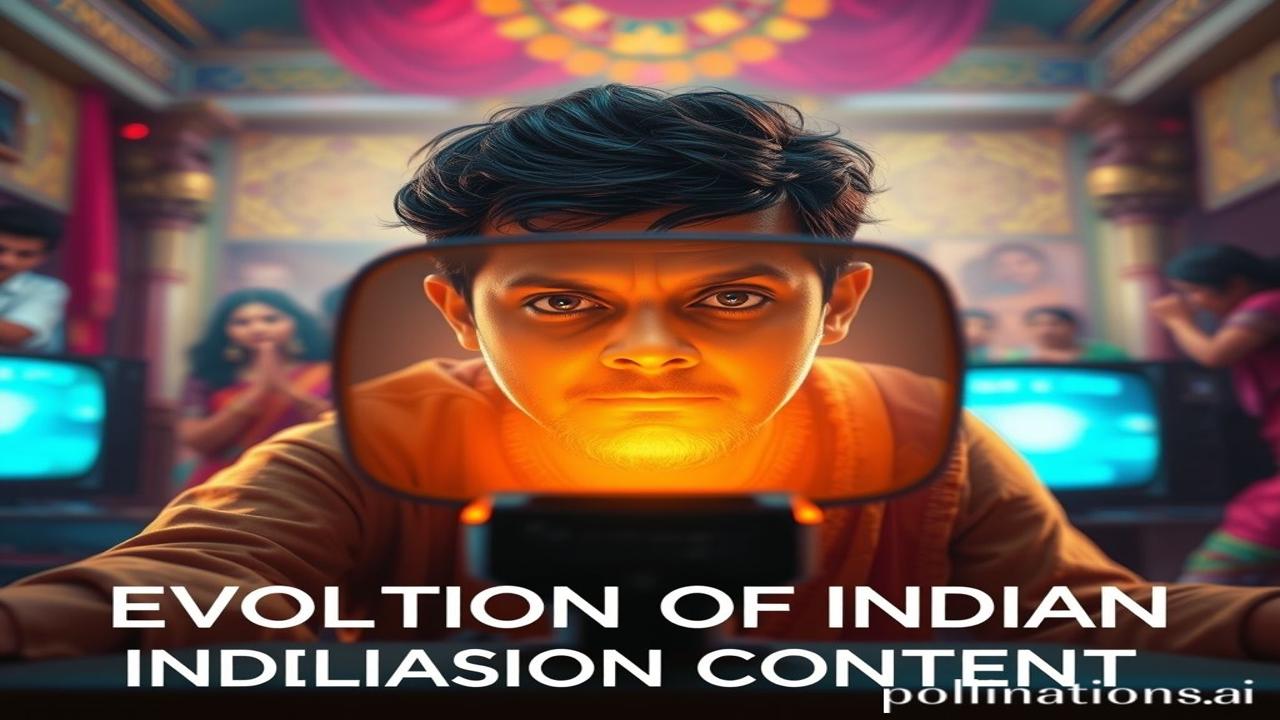Radio Silence to Reality TV: The Wild Ride of Indian Television
Kabhi socha hai, jab television nahi tha, toh logon ka entertainment kaise hota tha? Imagine, ghar mein koi screen nahi, koi YouTube nahi… sirf kahaniyan, kisse, aur apne logon ka saath. Ab, jara socho, ek choti si screen ne kaise sab kuch badal diya. Let’s rewind and explore the vibrant evolution of Indian television content!
The Black & White Dawn: A National Dream
Television in India, it wasn’t an overnight sensation. It started as a controlled experiment by UNESCO in 1959 in Delhi. Doordarshan, as it was lovingly called, began broadcasting educational and developmental programs. It was like the government telling us, “Dekho bhaiyo aur behno, yeh hai television, isse tum seekhoge aur aage badhoge!” It wasn’t about entertainment; it was about nation-building. The goal was spreading awareness about agriculture, health, and education in a country trying to find its feet after independence.
The real breakthrough came in 1982 with the introduction of colour television and the broadcast of the Asian Games. Suddenly, the world was brighter! Families gathered around the solitary TV set like it was a sacred fire. It was a moment of national pride and a technological leap that caught everyone’s imagination.
From Krishi Darshan to Hum Log: Content Takes Root
Early content was very different from what we see today. Shows like Krishi Darshan (agriculture program) were designed to educate farmers on modern techniques. Then came Hum Log in 1984 – the first Indian soap opera! This was revolutionary. It told the story of a middle-class family, their struggles, and their dreams. People connected with it instantly. It was like looking into a mirror and seeing your own family reflected back.
Lesser Known Fact:
Did you know that Hum Log ended each episode with a moral lesson imparted by a celebrity? It was like having a Bollywood star give you life advice every night!
The Cable Revolution: Channels Galore!
The 1990s brought a tsunami of change with the arrival of cable television. Suddenly, Doordarshan wasn’t the only game in town. Satellite channels like Zee TV, Star Plus, and Sony entered the fray. It was like the universe had exploded with options!
Star Wars: The Content Battle Begins
Competition heated up. Channels started experimenting with bolder, more entertaining content. Tara, Banegi Apni Baat, and Shanti challenged traditional narratives. Bollywood stars made their foray into television, further blurring the lines between the big screen and the small screen.
ज़मीनी सच – Log aur Jeevan:
Imagine Rekha sitting with her family, all eyes glued to Mahabharat. Every Sunday morning, the streets were deserted as families gathered to watch the epic. It wasn’t just a show; it was a ritual, a collective experience that bound the nation together.
The Era of Reality: Dancing, Singing, and Crying on TV
The 2000s saw the rise of reality television. Shows like Kaun Banega Crorepati, Indian Idol, and Bigg Boss captured the nation’s imagination. Suddenly, ordinary people were becoming stars overnight. It was a reflection of India’s aspirational spirit – the belief that anyone could achieve fame and fortune.
Emotional Manipulation or Authentic Connection?
These shows often relied on drama, tears, and emotional manipulation. But they also offered a platform for talented individuals to showcase their skills and achieve their dreams. The debate continues: are these shows genuine expressions of emotion or carefully orchestrated spectacles?
OTT Overload: Content on Demand
The arrival of streaming services like Netflix, Amazon Prime Video, and Hotstar (now Disney+ Hotstar) has revolutionized the landscape yet again. Now, we can watch anything, anytime, anywhere. The power has shifted from the broadcasters to the viewers.
The Content Kaleidoscope: A Blend of Global and Local
OTT platforms offer a vast library of content, from international blockbusters to regional gems. Indian web series like Sacred Games, Mirzapur, and Delhi Crime have gained global recognition, showcasing the diversity and talent of Indian storytelling.
धरोहर और पहचान / Cultural Significance Today:
Television has played a huge role in shaping our cultural identity. Whether it’s through the retelling of mythological epics or the exploration of contemporary social issues, television reflects and influences our values, beliefs, and aspirations. Shows like Ramayan and Mahabharat are not just entertainment; they are cultural touchstones that connect us to our heritage. Even reality shows, despite their flaws, reflect our collective desire for success and recognition.
मजेदार तथ्य या भ्रम-भंजक / Fun Fact or Myth-Buster:
Log samajhte hain ki Indian television sirf drama aur saas-bahu serials ke bare mein hai. Lekin asli sach yeh hai ki Indian television industry mein bahut creativity aur innovation hai. Independent filmmakers, regional content creators, and digital platforms are constantly pushing boundaries and experimenting with new forms of storytelling.
दृश्य और भावनाएं / Visual & Sensory Layer:
Imagine the crackling sound of the television warming up, the faint smell of dust gathering on its wooden cabinet, the flicker of the black and white screen as Chitrahaar starts playing. The collective gasp as Hanuman flies across the screen in Ramayan, the tears streaming down faces as Buniyaad portrays the partition’s horrors. These are the sensory memories that define our collective experience with Indian television.
अंतिम विचार या उद्धरण / Closing Insight or Quote:
Television is more than just a screen; it’s a window into our souls, a reflection of our society, and a powerful force that shapes our dreams. As the digital landscape continues to evolve, one thing remains constant: the human need for stories that connect us, inspire us, and remind us of who we are.
“मनोरंजन ही जीवन का सार है, और टेलीविजन उसका एक अहम हिस्सा.” (Entertainment is the essence of life, and television is a vital part of it.)
